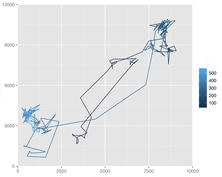Publication trimestrielle du Laboratoire
d'analyse et d'architecture des systèmes du CNRS
In order to autonomously navigate in an environment, a robot has to per- ceive its environment correctly. Rich perception information from the envi- ronment enables the robot to perform tasks like avoiding obstacles, building terrain maps, and localizing itself. Classically, outdoor robots have perceived their environment using vision or 2D lidar sensors. The introduction of novel 3D lidar sensors such as the Velodyne device has enabled the robots to rapidly acquire rich 3D data about their surroundings. These novel sensors call for the development of techniques that efficiently exploit their capabilities for autonomous navigation.The first part of this thesis presents a technique for the calibration of 3D lidar devices. The calibration technique is based on the comparison of acquired 3D lidar data to a ground truth model in order to estimate the optimal values of the calibration parameters. The second part of the thesis presents a technique for qualitative localization and loop closure detection for autonomous mobile robots, by extracting and indexing small-sized signatures from 3D lidar data. The signatures are based on histograms of local surface normal information that is efficiently extracted from the lidar data. Experimental results illustrate the developments throughout the manuscript.





